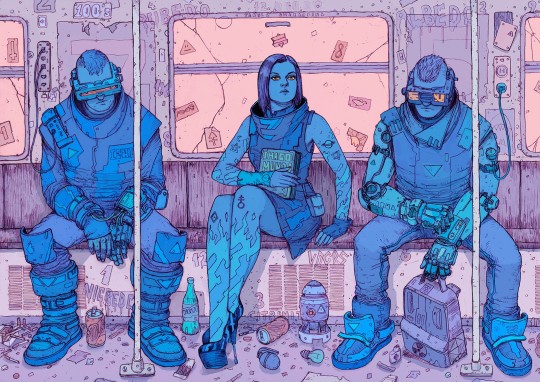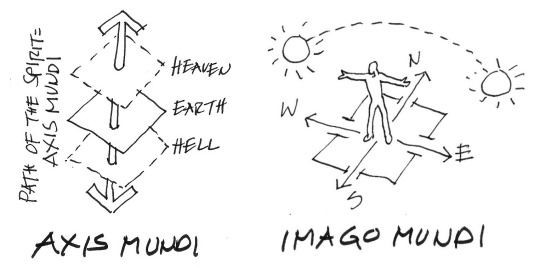#imago mundi
Explore tagged Tumblr posts
Text

Babylonian Map of the World (6th century BC), also known as Imago Mundi, is oldest clay tablet map written in Akkadian.
The tablet describes the oldest known depiction of the known world.
It was discovered at Sippar, southern Iraq, 60 miles north of Babylon on east bank of Euphrates River.
This map not only serves as a historical record of the region's geography but also includes mythological elements, providing a comprehensive view of the ancient Babylonian worldview.
Today, the Babylonian Map of the World is housed in the British Museum, where it continues to be a valuable artifact for understanding the ancient past.
Details of the map:
1. “Mountain” (Akkadian:šá-du-ú)
2. “City” (Akkadian: uru)
3. Urartu (Armenia) (Akkadian: ú-ra-áš-tu)
4. Assyria (Akkadian: kuraš+šurki)
5. Der (Akkadian: dēr)
6. Swamp (Akkadian: ap–pa–ru)
7. Elam (Akkadian: šuša)
8. Canal (Akkadian: bit-qu)
9. Bit Yakin (Akkadian:bῑt-ia-᾿-ki-nu)
10. “City” (Akkadian: uru)
11. Habban (Akkadian: ha-ab-ban)
12. Babylon (Akkadian: tin.tirki), divided by Euphrates
13. Ocean (salt water, Akkadian:idmar-ra-tum)
#Babylonian Map of the World#Imago Mundi#clay tablet map#clay tablet#Akkadian#Sippar#Iraq#British Museum#history#mythology#map#Archaeo Histories#Ancient Babylon#Babylonia#geography#artifact
557 notes
·
View notes
Text

#Ancient#ancient mesopotamia#babylonian#babylon#Babylon#british museum#London#Babylonian Map of the World#Imago Mundi#clay tablet map#clay tablet#Akkadian#Sippar#Iraq
0 notes
Text




THE CITY OF GOD, part 2
A man named Willian Penn founded a city called Philadelphia in the seventeenth century, four square and oriented to the cardinal points, in the age old image of Eden - the Imago Mundi. At the center was an open square, a navel, on which at the end of the 19th century a tower was built as part of city hall. This Axis Mundi is visible for miles around, announcing to all that the City of Brotherly Love, heir to the ancient Philadelphia of the Bible (now Amman, the capital of Jordan), gathers men together under the protection of God.
In the 1980’s an architect from Philadelphia, born in Rome – Aldo Giurgola - won a competition to design the new capitol building of Australia in Canberra, a new city laid out at the beginning of the century. This man-made mountain, four square, has at its center the flag of the nation, an Axis Mundi calling citizens together under the sign of the natural order of the cosmos.
And so we secular folk continue down to the 21st century to re-enact the rituals of life whose meaning continues to reverberate despite our ignorance of their origins.
0 notes
Text




THE CITY OF GOD, part 2
A man named Willian Penn founded a city called Philadelphia in the seventeenth century, four square and oriented to the cardinal points, in the age old image of Eden - the Imago Mundi. At the center was an open square, a navel, on which at the end of the 19th century a tower was built as part of city hall. This Axis Mundi is visible for miles around, announcing to all that the City of Brotherly Love, heir to the ancient Philadelphia of the Bible (now Amman, the capital of Jordan), gathers men together under the protection of God.
In the 1980’s an architect from Philadelphia, born in Rome – Aldo Giurgola - won a competition to design the new capitol building of Australia in Canberra, a new city laid out at the beginning of the century. This man-made mountain, four square, has at its center the flag of the nation, an Axis Mundi calling citizens together under the sign of the natural order of the cosmos.
And so we secular folk continue down to the 21st century to re-enact the rituals of life whose meaning continues to reverberate despite our ignorance of their origins.
1 note
·
View note
Text

Babylonian Map of the World, 8th or 7th Century B.C.
The Babylonian Map of the World (also Imago Mundi or Mappa mundi) is a Babylonian clay tablet with a schematic world map and two inscriptions written in the Akkadian language. It includes a brief and partially lost textual description.
The tablet describes the oldest known depiction of the known world. Ever since its discovery there has been controversy on its general interpretation and specific features. Another pictorial fragment, VAT 12772, presents a similar topography from roughly two millennia earlier.
The map is centered on the Euphrates, flowing from the north (top) to the south (bottom), with its mouth labelled "swamp" and "outflow". The city of Babylon is shown on the Euphrates, in the northern half of the map. Susa, the capital of Elam, is shown to the south, Urartu to the northeast, and Habban, the capital of the Kassites, is shown (incorrectly) to the northwest. Mesopotamia is surrounded by a circular "bitter river" or Ocean, and seven or eight foreign regions are depicted as triangular sections beyond the Ocean, perhaps imagined as mountains.
The tablet was excavated by Hormuzd Rassam at Sippar, Baghdad vilayet, some 60 km north of Babylon on the east bank of the Euphrates River. It was acquired by the British Museum in 1882 (BM 92687); the text was first translated in 1889. The tablet is usually thought to have originated in Borsippa. In 1995, a new section of the tablet was discovered, at the point of the upper-most triangle.
Clay, Height: 12.2 cm (4.8 in), Width: 8.2 cm (3.2 in)
Courtesy: British Museum
#art#history#design#style#archeology#sculpture#antiquity#tablet#map#map of the world#babylon#british museum#mesopotamia#text#writing#drawing#euphrates#elam#susa#habban
117 notes
·
View notes
Photo

Imago Mundi by Death Burger ( Josan Gonzalez )
186 notes
·
View notes
Text

Mercedes Francisco De Carvalho (Mac 33) (Angolan b. 1994), Memte Lfivre, 2015. Pen on canvas. (Source: Imago Mundi Collection)
#art#artwork#modern art#contemporary art#modern artwork#contemporary artwork#21st century modern art#21st century contemporary art#Angolan art#Angolan artwork#modern Angolan art#contemporary Angolan art#Angolan artist#Mercedes Francisco De Carvalho
2 notes
·
View notes
Text
4 notes
·
View notes
Text
Thinking about how Elden Ring serves as a Spiritual Successor to a Certain Fantasy Series
I find fascinating the lore ouroboros from reading Elden Ring in context of the Wheel of Time and vice versa. Significant spoilers ahead for Elden Ring and minor spoilers for Wheel of Time.
There's the surface level stuff like:
The Erdtree Guardians wield sword-spears and are guarding offshoots of the Tree of Life like the Aiel with Avendesora? Neat!
The previous Elden Lord fought with an axe and was succeeded by an Elden Lord who fights with a hammer and runs with wolves? Sounds a lot like the character arc of Perrin Aybarra. The Beastman of Farum Azula in Limgrave could even be a wolf brother who was "lost to the wolf"
Interesting choice to have a Commander Niall at Castle Sol, considering that Wheel of Time has Pedron Niall, the Lord Captain Commander of the Children of the Light. A villain who thinks that his cause is righteous. This has...implications...considering Miquella's connection to Castle Sol...
It gets more pointedly specific:
Raya Lucaria academy being located in a anatomically shaped body of water and governed by a woman sounds pretty similar to Tar Valon. But maybe it's just a trick of my eyes that the lake looks like an anatomical heart with the roadways and landmasses located at the major veins and arteries (I've sketched this out and it seems legit - it's an uncommonly seen angle of the heart though)
Radagon's name can be rearranged to "a dragon", is red-haired like Rand al'Thor, and his personal rune is a loose rendering of a woven Pattern - one of the central motifs of Wheel of Time. That seems a little beyond simple homage by GRRM to the works of a fellow author who he was well acquainted with (a nod from one book in A Song of Ice and Fire: "Archmaester Rigney wrote that history is a wheel, that the nature of man is fundamentally immutable. According to him, what has already happened will happen again, without remedy.").
So, what can Elden Ring be saying about Wheel of Time, a series that infamously has lingering questions that will never be answered due to literal death of the author.
There's a statue of a bearded man in the underground areas with a tablet at his feet that depicts the Imago Mundi - a real world artefact that is a map of Mesopotamia. This is implied to be the earliest age of civilization in Elden Ring just as real world civilization emerged from the river basin between the Tigres and Euphrates Rivers. This is where the ouroboros wraps back around to realizing that there may be some symbolism in Wheel of Time beginning at protagonist Rand al'Thor's home in a region called the Two Rivers.
The "Loux" in Hoarah Loux is a Germanic surname meaning "Lynx Eyed", or having sharp eyesight. The kind of eyesight that would be useful for a man out at sea navigating by the stars. The Prologue of Wheel of Time begins with the previous incarnation of the Dragon before Rand, a man named "Lews" Therin Telamon. "Theron" is a Greek word meaning "hunter". "Telamon" is the name of one of the Argonauts who sailed with Jason to find the Golden fleece. So the full name could mean "sharp eyed hunter, a seeker of the Golden fleece". It seems appropriate that Rand the 'Dragon Reborn' starts off his journey as a shepherd who tends sheep.
The Western Zodiac consists of 12 astrological signs (and sometime Ophiuchus), of which Aries is the first sign. The story associated with the constellation Aries is the story of the Golden Fleece. Wheel of Time was also supposed to be 12 books long. It was very important to author James Rigney (pen name Robert Jordan) that the series end with the 12th book - but circumstances being what they were the series eventually concluded with Brandon Sanderson writing the 12th, 13th and 14th volumes.
That's about as much as can be covered without getting really into the deep lore of Wheel of Time. I have a lot more thoughts about how both Wheel of Time and Elden Ring are thematically bound to the wheel of Vedic Astrology and invoking themes of a dreamlike collective unconsciousness (the Jungian thing). Also the alchemy stuff.
#Elden Ring#elden ring lore#Wheel of Time#media analysis#Fun note: there are Wheel of Time references in Kingsfield (1994)#There's something poetic thinking about Miyazaki and GRRM bringing full circle a story that was started by Naotoshi Zin and WoT#The FromSoft meta-narrative is terrific - in the sense of causing terror#Most impressive artistic achievement
3 notes
·
View notes
Link
PòLIS - Gianpiero Menniti racconta la Comunicazione l'Arte e la Politica
L’ARTE DEL CORAGGIO
Questa volta un racconto d'arte di una pittrice insolita, Selina Spolverini. Osservo le opere che ha pubblicato in un volume assai curato dal titolo: "Stupenda follia". È anche il titolo di un suo dipinto, quello che campeggia in copertina. Non leggo nulla, osservo solo i dipinti. Qualcosa non torna, provoca disagio: il segno mostra tratti originari, ancestrali, mentre le placche di colore, estese e tormentate, introducono in una sorta di caos simmetrico, come di nebbia che per istanti si dirada in zone precise, sospinta da folate rivelatrici e fugaci. Decido di leggere le sue parole e finalmente comprendo quella sensazione di faticoso stentare. E si apre la soglia di un mondo...

9 notes
·
View notes
Text
Arche de Noé : des scientifiques confirment son emplacement sur le Mont Ararat en Turquie
Après plus de 150 ans de travail, des scientifiques semblent avoir percé le mystère d’une très vieille pièce provenant de Mésopotamie. Celle-ci , appelée Imago Mundi (voir image ci-dessus) comporterait l’emplacement de la mythique Arche de Noé. Continue reading Arche de Noé : des scientifiques confirment son emplacement sur le Mont Ararat en Turquie

View On WordPress
0 notes
Text




THE CITY OF GOD, part 1
In this holy week we in Philadelphia may happen to think of St. Augustine, who wrote the City of God to absolve Christianity of the fall of Rome, instead making of Rome the triumph of Christianity, the City of God. But all cities in the traditional world of religion were attempts to found on earth a home in the image of the sacred order of the cosmos.
Scholars of religion will tell you of the search of religious man in archaic societies to orient himself to the eternal in a chaotic and hostile world.
He looks for the center where a break through occurs, from plane to plane, a vertical axis that connect Heaven, Earth and Hell. It is where the hero - Christ in the case of Christians - ascends or descends and the life-giving energy flows down to this world.
This Axis Mundi, as it is called in Latin, pierces the earth at the navel of the world.
From the point of the axis spreading out in four directions religious man recreates an image of the sacred order of God in this world. He creates an Imago Mundi, the image of God’s perfect world, Eden.
Genesis describes how four rivers ran to the four cardinal directions from a source in the center of Eden.
Two of these rivers were the Tigris and the Euphrates, which do not in fact run at a right angle to each other but roughly parallel through what is now Iraq.
The archetypical Islamic garden with its water channels reproduces this image of the Garden of Eden.
0 notes
Text




THE CITY OF GOD, part 1
In this holy week we in Philadelphia may happen to think of St. Augustine, who wrote the City of God to absolve Christianity of the fall of Rome, instead making of Rome the triumph of Christianity, the City of God. But all cities in the traditional world of religion were attempts to found on earth a home in the image of the sacred order of the cosmos.
Scholars of religion will tell you of the search of religious man in archaic societies to orient himself to the eternal in a chaotic and hostile world.
He looks for the center where a break through occurs, from plane to plane, a vertical axis that connect Heaven, Earth and Hell. It is where the hero - Christ in the case of Christians - ascends or descends and the life-giving energy flows down to this world.
This Axis Mundi, as it is called in Latin, pierces the earth at the navel of the world.
From the point of the axis spreading out in four directions religious man recreates an image of the sacred order of God in this world. He creates an Imago Mundi, the image of God’s perfect world, Eden.
Genesis describes how four rivers ran to the four cardinal directions from a source in the center of Eden.
Two of these rivers were the Tigris and the Euphrates, which do not in fact run at a right angle to each other but roughly parallel through what is now Iraq.
The archetypical Islamic garden with its water channels reproduces this image of the Garden of Eden.
1 note
·
View note
Text
0 notes
Text
Location of 'Noah's Ark' is revealed as scientists decipher world's oldest map on 3,000-year-old Babylonian tablet
Daily Mail News – Science By STACY LIBERATORE FOR DAILYMAIL.COM PUBLISHED: 14:46 EDT, 28 October 2024 | UPDATED: 14:52 EDT, 28 October 2024 Scientists have deciphered the world’s oldest map etched in a clay tablet about 3,000 years ago, finding it features the location of ‘Noah’s Ark’ among the drawings. The Babylonian artifact, known as the Imago Mundi, shows a circular diagram with a writing…
0 notes
Text
World's oldest map dating back 3,000 years reveals surprising details
0 notes